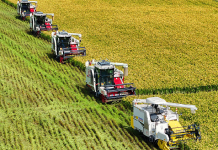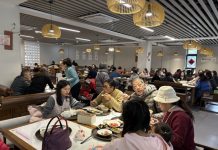BEIJING: Since childhood, Mao Haofu has been hearing stories about revolutionary figures and the revolutionary base in his hometown—Jinggangshan City in Jiangxi Province—from his grandfather Mao Binghua, former curator of the Jinggangshan Museum.
In 2015, Mao Haofu graduated with a master’s degree in accounting and finance and began working for a company in Nanchang, capital of Jiangxi. However, spurred on by his desire to record and pass on the revolutionary legacies, two years later he decided to return to his hometown and become a tour guide at the Jinggangshan Museum.
“I hope that through my introduction, visitors can develop a deeper understanding of China’s revolutionary history and culture, even if they had little knowledge of them prior to coming here,” Mao Haofu told ThePaper.com.
Jinggangshan is one of the hottest destinations of red tourism, a term which refers to visiting historical sites with a revolutionary legacy of the Communist Party of China (CPC). Red nostalgia has fueled this popular type of tours for people to take during national holidays.
This year, during the Tomb-Sweeping Day holiday, which fell on April 3-5, the Jinggangshan scenic area received 34,700 tourists and realized an overall tourism income of 22.9 million yuan ($3.5 million), an increase of 3.58 percent and 5.26 percent, respectively, over 2019.
Cradle of revolution
Jinggangshan is known as the center of early revolutionary activity of the CPC. It was home to the CPC’s first rural revolutionary base, established in 1927.
Since then, revolutionary bases had been gradually established in the country, which strategically facilitated the overthrow of the feudal land ownership system that had been in place for thousands of years and eventually resulted in victory of the CPC-led revolution in China.
– The Daily Mail-Beijing Review News exchange item






